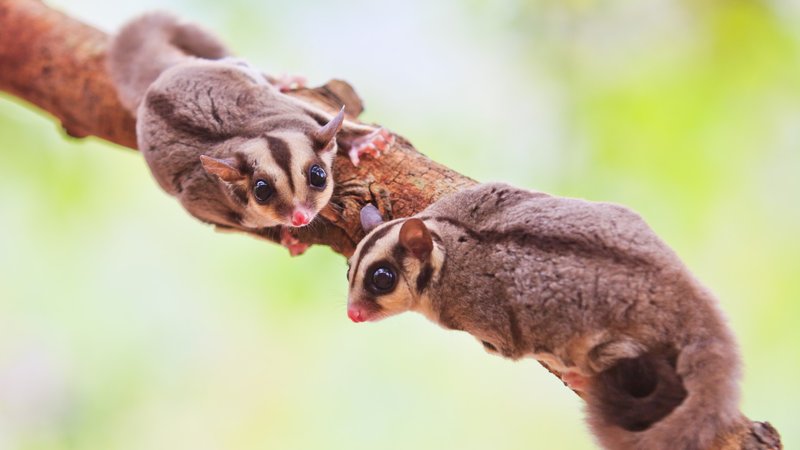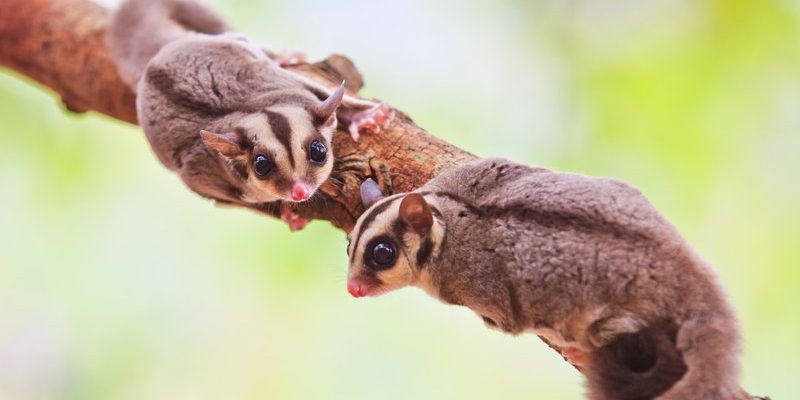
Sugar gliders are fascinating little creatures with their big eyes and playful personalities. They’re not your average pet. Caring for them is a bit like having a combination of a hamster and a flying squirrel. It’s important to weigh the *pros and cons* before making a decision, just like you would with any major life choice. Let’s dive into what it really takes to keep these lively little critters happy and healthy.
What Are Sugar Gliders?
Sugar gliders are small, nocturnal marsupials native to Australia and New Guinea. They’re known for their ability to glide through the air thanks to a membrane that stretches from their wrists to their ankles. This allows them to soar from tree to tree in the wild. With their playful nature and social behavior, they tend to bond closely with their human companions, making them seem like the perfect pet—if you know what you’re getting into.
First, let’s talk size. Adult sugar gliders typically weigh between 4 to 5 ounces and measure about 10 to 12 inches long, not including their tail. You might say they’re the perfect pocket-sized pet! They also have a lifespan of around 10 to 15 years, so you can expect a long-term commitment.
Pros of Owning a Sugar Glider
They’re Social Creatures
Sugar gliders are incredibly social animals. If you’re looking for a pet that loves to interact, these little ones could be a great choice. They thrive on companionship, which means they’ll bond with you and may even enjoy cuddling and playing. Just imagine them snuggling up on your shoulder or gliding around your living room. It’s hard not to smile when they twist and turn with curiosity.
Low Space Requirements
Unlike some pets that need a large space to roam, sugar gliders don’t take up much room at all. A well-equipped cage with plenty of vertical space will do just fine. They’re happiest when they have a variety of toys, branches, and hiding spots in their enclosure. Plus, they love to exercise, so giving them time outside of their cage to play in a safe area will keep them happy and healthy.
Unique Personalities
Another perk is their quirky and entertaining behavior. Sugar gliders are known for their playful antics and curious nature. They love to explore their surroundings and can be quite cheeky! You might find them doing little flips or making adorable chirping sounds. Watching them can be endlessly entertaining.
Cons of Owning a Sugar Glider
They Require a Lot of Attention
While they might be cute and cuddly, sugar gliders demand quite a bit of care. They’re nocturnal, which means they’re most active at night when you might be winding down. If you can’t commit to interacting with them during their active hours, they might become bored or stressed. That’s not a fun situation for either of you!
Dietary Needs Can Be Complicated
Feeding sugar gliders isn’t as simple as tossing them some pellets. They require a balanced diet of fruits, vegetables, and protein. Understanding their nutritional needs can feel like a full-time job at times. You might need to prepare their food daily, and it can be tricky to ensure they get everything they need for a healthy life.
They Can Be Noisy
Sugar gliders are, well, *gliders*, and part of their charm is their vocalizations. However, they can be quite noisy at night. If you live in an apartment or a quiet neighborhood, their chirps, barks, and calls might disturb your peace—or that of your neighbors. This is something to think about before you choose to bring them home.
Caring for Your Sugar Glider
If you’ve decided to go ahead and adopt a sugar glider, you’ll need to prepare. Create a cage that mimics their natural habitat as much as possible. This means having plenty of space to climb and play. You can fill it with branches, hammocks, and safe toys. Remember, sugar gliders are active little creatures that need stimulation, so keep that in mind when setting up their home.
Their diet is also crucial. You’ll want to include a mix of fruits and veggies, along with protein sources like mealworms or cooked chicken. Some owners follow specific diets, like the *Leadbeater’s mix*, which is popular among sugar glider enthusiasts. Make sure you do your research and talk to a vet who understands their needs.
Social Needs of Sugar Gliders
As social animals, sugar gliders thrive in pairs or groups. If you’re considering getting one, you might want to think about adopting two. That way, they can keep each other company, especially when you’re busy or not home. Just like any friendship, they need time to bond with each other and with you.
Daily interaction is a must. Spend time handling them, allowing them to explore your home in a safe way, and building trust. You can also train them to do tricks or explore new areas under supervision. This will help strengthen your bond and keep both the sugar glider and you entertained.
Finding the Right Sugar Glider
When it comes to adopting a sugar glider, it’s essential to find a reputable breeder or rescue organization. Be wary of pet stores, as they may not always provide the best care for these delicate animals. Look for a breeder that is knowledgeable and passionate about sugar gliders, and don’t hesitate to ask questions. A healthy sugar glider should be alert, active, and have clear eyes.
Do your homework before you head out to make a decision. Talk to other sugar glider owners, read books, and check online communities dedicated to these charming creatures. It’s all about making a well-informed choice before jumping in.
So, are sugar gliders good pets for beginners? The answer is a bit of a mixed bag. They’re adorable, social, and unique pets, but they require a lot of attention, commitment, and care. If you’re ready for a furry friend that needs interaction and has specific dietary needs, a sugar glider might just be the perfect companion for you.
However, if you’re looking for a low-maintenance pet, or if nighttime noise might disrupt your life, you might want to consider other options. Whatever you decide, make sure you’re informed and excited about the journey ahead. After all, a pet should bring joy and companionship, not stress. Happy pet parenting!

